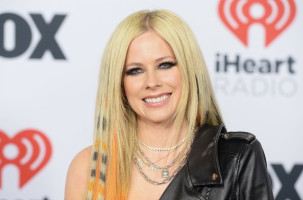No other music streaming service comes close to matching Spotify when it comes to active listeners and impact, and that’s why most independent artists make it a priority to get their music on the service.
With as many as 400 million active users, Spotify easily tops Apple Music, Amazon Music, YouTube Music and more in terms of market share. Just getting your music on Spotify is a good start, but there’s a lot more that can be done for artists who take promoting themselves seriously.
Joining Spotify for Artists is essential – it allows you to promote yourself and tracks audience stats. Artists can also pitch their unreleased music to Spotify’s playlist editors, and the service offers some built-in marketing tools like Ad Studio and Marquee that allow you to target both free and premium users.
A new study by Spotify offers more insight to artists interested in promoting their music. Among its highlights: Latin America listens to the most new music (especially São Paulo, Santiago, and Mexico City), the lines separating genres are continuing to blur (more than half of fans of metal music also follow hip hop artists), fans that save your tracks will listen three times more, and the day of a new release sees a huge spike in visits to your artist profile (but more than half of artists don’t update their profiles until its too late).
But you need more than tidbits of information to get the most out of it; you need to know how Spotify’s algorithm works. After all, it’s the algorithm that does such a good job recommending new music, playlists and curating your “daily mix.”
First, what’s an algorithm? It’s basically a list of instructions that a computer follows to complete a task. They need data – the more the better – to complete that task. If an algorithm is designed to curate a playlist of music that a user will enjoy, the playlist will turn out a lot better if it has several weeks, months (or even years) of your listening data to use.
So Spotify’s algorithm, like all others, is all about data. It uses your listening history, playlists you’ve created, songs you’ve skipped and more. The algorithm also searches for playlists created by other users, and other artists, that are similar to what you’ve been listening to.
According to Sameer Balaganur at Analytics India Mag, the algorithm (known as Bandits for Recommendations as Treatments, or BART), uses a 30-second rule; if a user spends more than 30 seconds listening to a recommended song it goes down as a check on the recommendations.
But how do new and up-and-coming artists get their music recommended? You can always pitch your songs to the playlist editors, but that’s no guarantee. Spotify has developed another algorithm that analyses the audio of a song itself in an attempt to recognize characteristics it has in common with other tracks. If you’ve been listening to a lot of music with fuzzy, distorted guitars, the algorithm might just recommend a track from a new artist with fuzzy, distorted guitars.
The algorithms work well, but relying on them to promote your music is leaving a lot to chance. There’s another way independent artists can boost their profile, though, one that offers quick results.
Starlight PR’s 3 Weeks Social X Campaign focuses on organic growth in the social and streaming marketplace and uses influencer partnerships and search engine optimization to get your music exposed to millions of potential listeners.
The 3 Weeks Social X Campaign focuses on Spotify and TikTok, and Starlight’s strategic influencer partnerships are used tactically to get your music on playlists and boost social engagement. Artists can increase their streams, fanbase and more in a short period of time utilizing this campaign, which includes options for press releases and radio campaigns.








